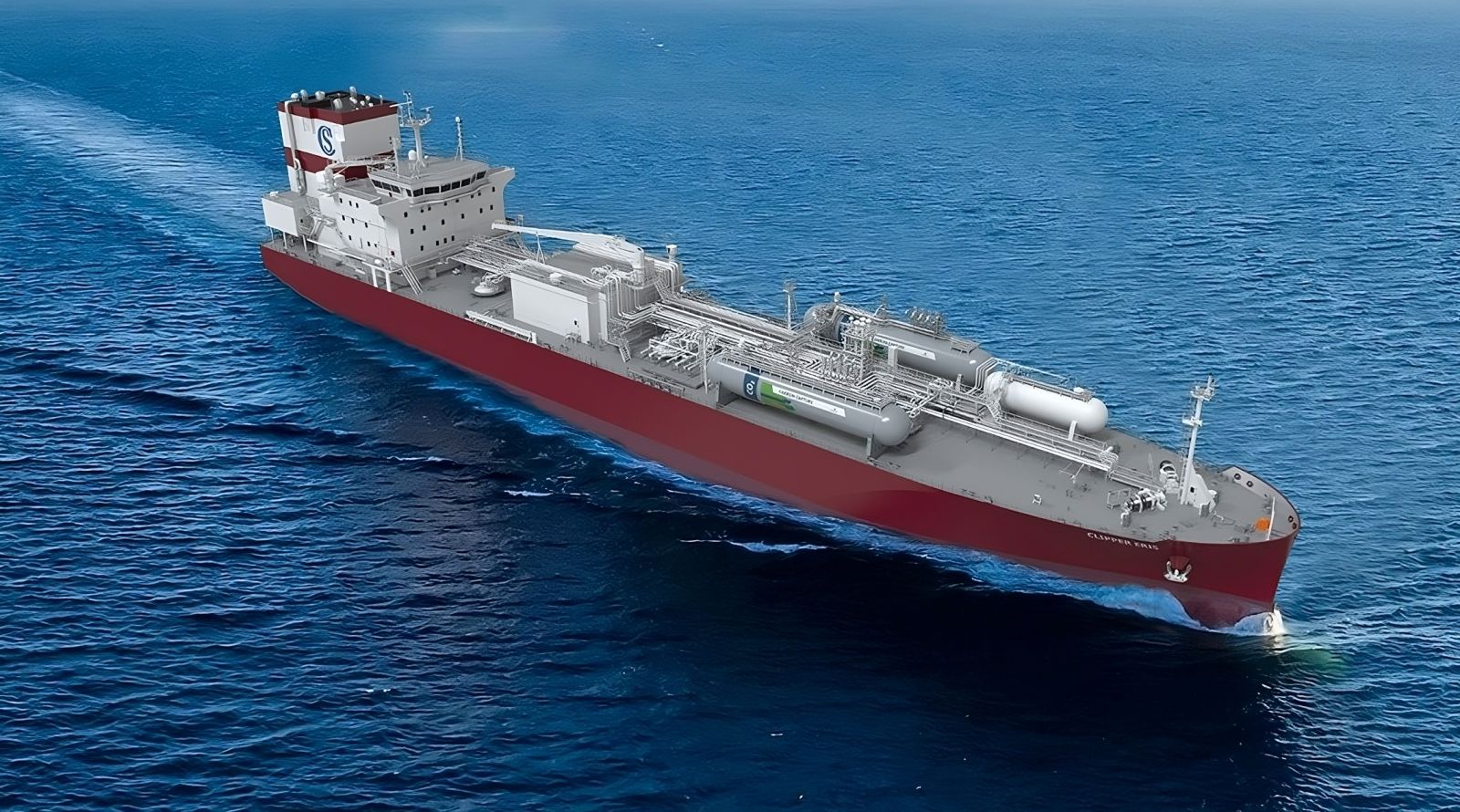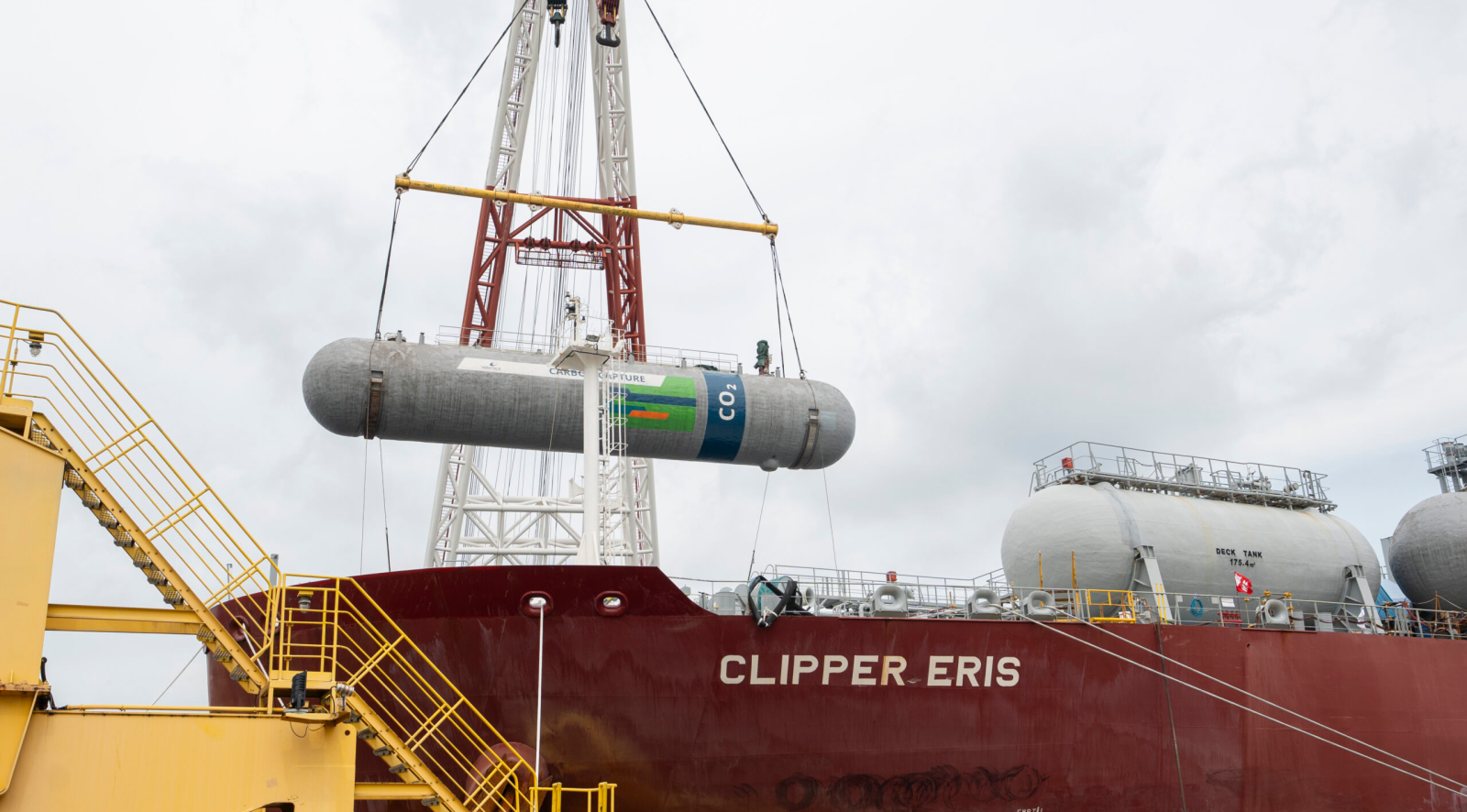Follow us on Google News (click on ☆)

The shipping industry, responsible for nearly 3% of global CO₂ emissions, is seeking solutions to achieve carbon neutrality by 2050. The Clipper Eris, a Norwegian cargo ship, is now equipped with pioneering technology capable of capturing up to 70% of its greenhouse gas emissions. This pilot project paves the way for rapid decarbonization of the global fleet.
A promising technology for the maritime sector
The carbon capture and storage (CCS) system installed on the Clipper Eris uses a filter to recover CO₂ from exhaust gases. Once captured, the CO₂ is liquefied and stored in onboard tanks. This method significantly reduces emissions without changing the fuel used.
CCS represents an immediate alternative to low-emission fuels, which require heavy investments and specific infrastructure. According to Solvang, the Norwegian shipping company behind the project, this technology could be deployed on a large scale for existing ships.
A pilot project supported by key players
The Clipper Eris was modified in a Singapore shipyard to accommodate this innovative system. The project is the result of a collaboration between Solvang, Wärtsilä, MAN Energy Solutions, and the Norwegian research institute SINTEF. The Norwegian government also provided financial support through Enova.
This partnership aims to demonstrate the effectiveness of CCS onboard ships. If the two-year trials are successful, seven other ships currently under construction could be equipped with this technology.

The challenges of decarbonizing maritime transport
Despite its potential, CCS only captures a portion of emissions and requires onshore infrastructure for CO₂ storage or reuse. The International Maritime Organization (IMO) must also implement incentive regulations to encourage its large-scale adoption.
The maritime sector still faces technical and regulatory obstacles to achieving its climate goals. However, innovations like that of the Clipper Eris show that concrete solutions are in development.
To go further: What is carbon capture and storage (CCS)?
CCS is a technology that captures CO₂ emitted by industries or transport before it is released into the atmosphere. Once captured, the CO₂ is compressed and stored underground or reused in industrial processes.
This method is already used in certain sectors, such as energy production or cement manufacturing. Its application onboard ships is a novelty that could redefine maritime transport.
What is the role of the International Maritime Organization (IMO)?
The IMO is a United Nations agency responsible for regulating international maritime transport. It sets standards to reduce greenhouse gas emissions and improve maritime safety.
In 2023, the IMO strengthened its climate goals, aiming for a 70 to 80% reduction in emissions by 2040 and carbon neutrality by 2050. These ambitions require technological innovations and international cooperation.
To go further: How can captured CO₂ be reused?
Captured CO₂ can be transformed into synthetic fuels, used in the agri-food industry, or injected into industrial processes. It can also be stored in geological formations to prevent its release into the atmosphere.
These applications offer economic opportunities while contributing to emission reduction. However, their development requires significant investments in infrastructure.